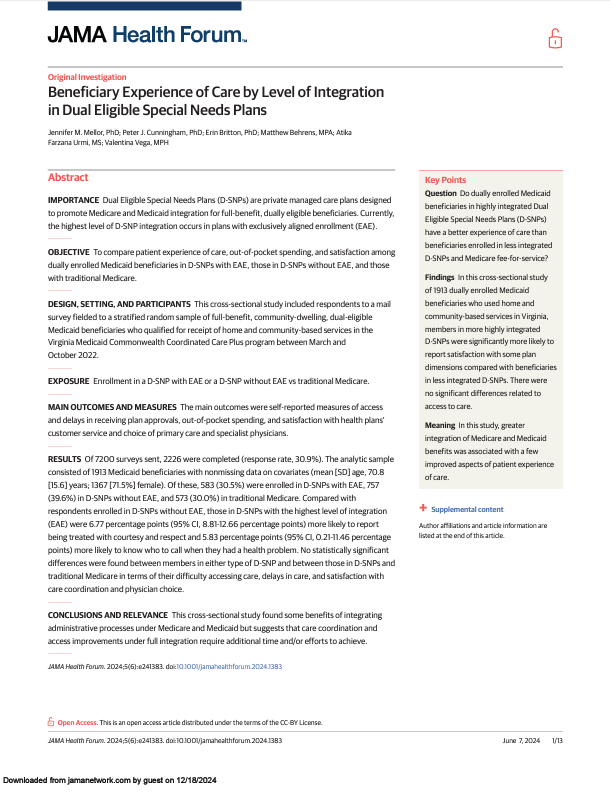Headline
Dual eligible beneficiaries in Virginia with integrated special needs plans reported lower out-of-pocket spending and greater plan satisfaction.
Background
States are taking steps to integrate Medicare and Medicaid to reduce care fragmentation for people who are dually eligible for both programs, as well as reduce administrative burden. Dual eligible special needs plans (D-SNPs) cover almost a third of eligible beneficiaries and offer varying levels of integration, including highly integrated (HIDE) and fully integrated (FIDE) dual eligible plans. These programs also offer aligned enrollment, where D-SNP beneficiaries receive their Medicare and Medicaid benefits from the same company. This study uses survey responses from dually eligible residents in Virginia who use home and community-based services to measure how access to care, out-of-pocket spending, and satisfaction vary by plans’ levels of integration.
Findings
Beneficiaries in an aligned enrollment D-SNPs were less likely to report out-of-pocket spending compared to individuals in an unaligned D-SNPs. Beneficiaries in more integrated D-SNPs (HIDE, FIDE plans) were also more likely to report higher satisfaction with their plan’s customer service, likely due to more streamlined customer service that is available through integrated D-SNPs, where beneficiaries are required to be in a Medicaid plan that aligns with their Medicare D-SNP.
Takeaways
Aligned and highly integrated D-SNPs can improve customer service and overall plan satisfaction among beneficiaries.

